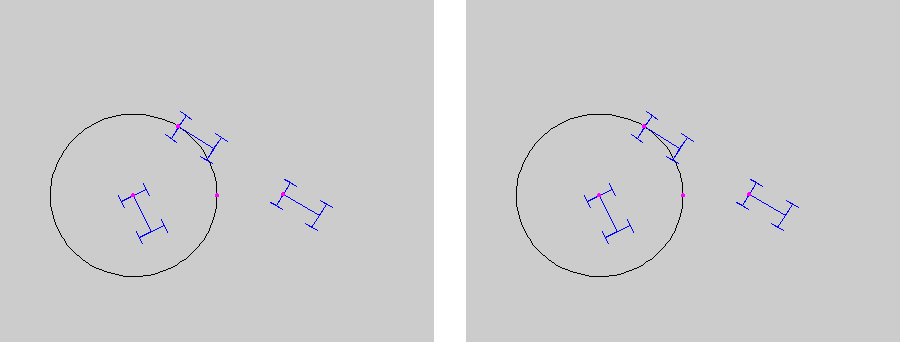Animated simulation results of trajectory tracking control for the kinematic model of a car. Comparison with flatness-based control.
The controllers are designed in such a way that the magenta point of the car has to follow the magenta point moving on the circle.
| |||
S.V.Gusev and I.A.Makarov, arXive:math/0507567. |
M.L.Fliess et al., Int.J.Cont. (1995) 61, 1327-1361 | ||

| |||
| The trajectory tracking is performed by the static control law. It is singular only when the front and rear axles of the car are orthogonal. (Such a position is impossible in practice.) Starting from a nonsingular position the system never reaches the singular one. The control law can stabilize any sufficiently smooth trajectory of the car. |
The trajectory tracking is performed by
the dynamic control law.
It is singular when the speed of the rear axle midpoint
is zero. In particular this happens when the front and
rear axles of the car are orthogonal.
Starting from a nonsingular initial state the system
can reach the singular one.
This is illustrated by the simulation.
For any initial state of the system there exist
a trajectory that cannot be stabilized due to
singularity in the control law.
| ||
Animated simulation of a road train control | |||